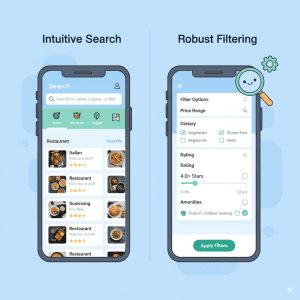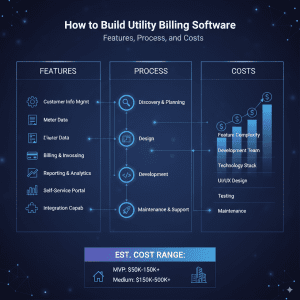Introduction
Mobile applications have become an integral part of our daily lives, with millions of apps available on the Google Play Store. But standing out in such a crowded marketplace is no easy task. One of the most effective ways to get your app noticed, drive massive downloads, and build brand credibility is by getting it featured in the Play Store. A featured app enjoys prime placement, significantly increasing its visibility and credibility among users. However, the path to earning this coveted spot requires strategic planning, optimization, and continuous improvement.
In this detailed guide, we’ll walk you through the step-by-step process of how to get your app featured on the Play Store. Whether you’re a startup, developer, or business owner, these actionable strategies will help you maximize your chances.
Step 1: Understand What It Means to Be Featured
When an app gets featured in the Play Store, it is highlighted by Google in special collections such as Editor’s Choice, Top Apps, or Trending Sections. Featured apps often experience exponential growth in downloads, better user engagement, and increased revenue. However, this isn’t something you can simply pay for—it requires compliance with Google’s standards and providing an exceptional user experience.
Google evaluates apps based on several factors:
- Quality and usability
- Innovative features
- User engagement and retention
- Compliance with Play Store policies
- Strong app store optimization (ASO)
Before moving forward, familiarize yourself with Google’s Play Store Guidelines and ensure your app meets the fundamental requirements.
Step 2: Build a High-Quality App
The first step toward being featured is to build a high-quality app that users love. Google prioritizes apps that deliver an excellent user experience.
Key aspects to focus on:
- Smooth Performance: Ensure the app runs without crashes, slowdowns, or bugs.
- Intuitive UI/UX: Simple, clean design that’s easy to navigate.
- Unique Value Proposition: Your app should solve a real problem or deliver entertainment in an innovative way.
- Compatibility: Support a wide range of devices and screen sizes.
High-performing apps are more likely to be recommended by Google editors.
Step 3: Optimize App Store Listing (ASO)
App Store Optimization is crucial for discoverability and plays a key role in getting featured.
Best practices include:
- Title & Description: Use clear, keyword-rich titles and descriptions.
- Icon & Graphics: A professional app icon, promotional images, and engaging screenshots are essential.
- Promo Video: Add a high-quality demo video that explains the app.
- Localized Content: Translate your app’s content into different languages to reach a global audience.
ASO not only increases downloads but also signals to Google that your app is relevant and user-friendly.
Step 4: Maintain Strong Ratings and Reviews
Google pays close attention to user feedback. Apps with consistent 4.5+ ratings and positive reviews have a much higher chance of being featured.
Tips to achieve this:
- Encourage satisfied users to leave reviews.
- Respond promptly to negative feedback.
- Continuously update the app to fix bugs and improve features.
- Add in-app prompts for reviews at the right time (e.g., after a positive user experience).
User trust and satisfaction directly influence your app’s visibility.
Step 5: Ensure Compliance with Google Policies
Google enforces strict policies to ensure apps are safe and trustworthy. Any violation can hurt your chances of getting featured—or worse, get your app removed.
Key policies to follow:
- Content Guidelines: No offensive, misleading, or harmful content.
- Ad Policies: Avoid intrusive or misleading ads.
- Data Privacy: Be transparent about user data collection and ensure compliance with GDPR and other regulations.
Apps that respect privacy and follow ethical practices stand out.
Step 6: Leverage Google Play Features
Google provides developers with tools and features that, when implemented, can improve your app’s chances of being featured:
- Android App Bundles for optimized delivery.
- Instant Apps that allow users to try your app without installing.
- Material Design Guidelines to enhance the visual appeal.
- Google Play Billing Library for smooth in-app purchases.
Incorporating these features shows Google that your app is modern and user-centric.
Step 7: Drive Engagement and Retention
It’s not just about downloads—Google wants apps that keep users engaged over the long term.
Strategies include:
- Push notifications with personalized content.
- Reward systems, gamification, and loyalty programs.
- Frequent updates with new features.
- Building communities around your app (forums, social media groups).
The higher your engagement and retention rates, the more likely you are to get featured.
Step 8: Build a Strong Marketing Strategy
Google looks at overall brand presence. Apps with solid marketing campaigns often gain attention faster.
Effective marketing strategies:
- Social Media Promotion: Leverage platforms like Instagram, LinkedIn, and Twitter.
- Content Marketing: Publish blogs and guides related to your app’s niche.
- Influencer Partnerships: Collaborate with industry influencers.
- Press Coverage: Reach out to media and tech blogs.
For inspiration, check out resources like TechOTD Blog where technology and app development trends are covered extensively.
Step 9: Connect with Google’s Editorial Team
Sometimes, direct communication can help. You can pitch your app to Google Play’s editorial team via the Google Play Console. Share what makes your app unique, its growth metrics, and how it provides value to users.
While there’s no guarantee, having a direct pitch can increase your visibility.
Step 10: Keep Updating and Innovating
Finally, the most sustainable way to get noticed is by continuously improving your app.
- Release regular updates with fresh features.
- Monitor analytics and adapt based on user behavior.
- Stay ahead of competitors by adding cutting-edge technologies like AI, Blockchain, and Predictive Analytics.
For example, platforms like AI Solutions at TechOTD and Blockchain Business Process Integration showcase how adopting innovative technologies can help apps stand out in competitive markets.
Additional Tips to Maximize Your Chances
- Showcase your app in case studies and reports, similar to how Large Language Models in Finance are documented.
- Focus on customer journeys and experience excellence, like this AI-driven customer service blog.
- Explore emerging technologies and trends such as Best Gadgets for Programmers 2025 or Predictive Analytics Software.
- Understand the impact of technology in various domains, as explained in Tech’s Role in Education.
- Stay updated with framework comparisons like React Native vs Swift.
- Learn more about Mobile App Development Services and industry standards.
Conclusion
Getting your app featured in the Google Play Store is not an overnight process. It requires a blend of high-quality development, smart marketing, user engagement, compliance, and continuous innovation. By following this step-by-step guide, you can significantly improve your chances of standing out in a competitive marketplace.
Remember, the journey doesn’t stop once your app is featured. The real challenge lies in maintaining your app’s performance, keeping users engaged, and staying relevant in an ever-changing digital ecosystem.
If you’re building an app and want to leverage advanced technologies like AI, Blockchain, and Predictive Analytics, explore resources at TechOTD to stay ahead of the curve.











